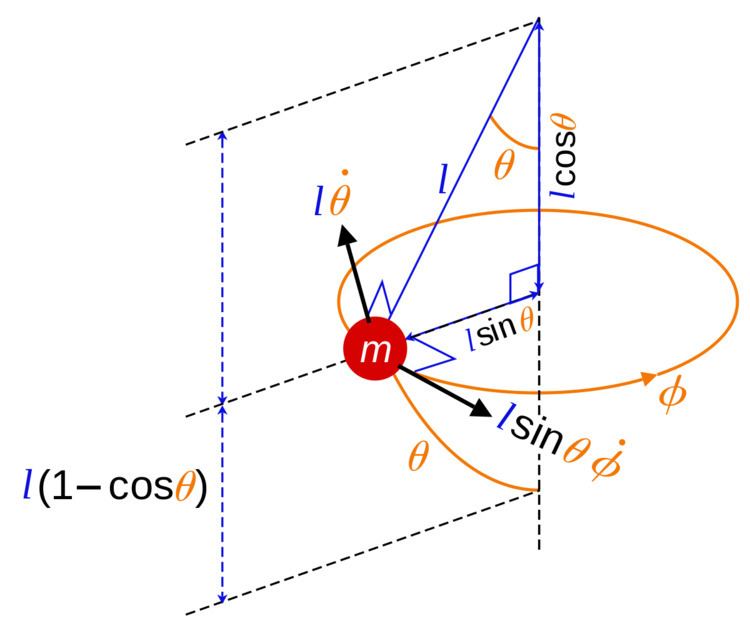 | ||
In physics, a spherical pendulum is a higher dimensional analogue of the pendulum. It consists of a mass m moving without friction on the surface of a sphere. The only forces acting on the mass are the reaction from the sphere and gravity.
Contents
Owing to the spherical geometry of the problem, spherical coordinates are used to describe the position of the mass in terms of (r, θ, φ), where r is fixed. In what follows l is the constant length of the pendulum, so r = l.
Lagrangian mechanics
The Lagrangian is
The Euler–Lagrange equations give :
and
showing that angular momentum is conserved.
Hamiltonian mechanics
The Hamiltonian is
where
and
References
Spherical pendulum Wikipedia(Text) CC BY-SA
